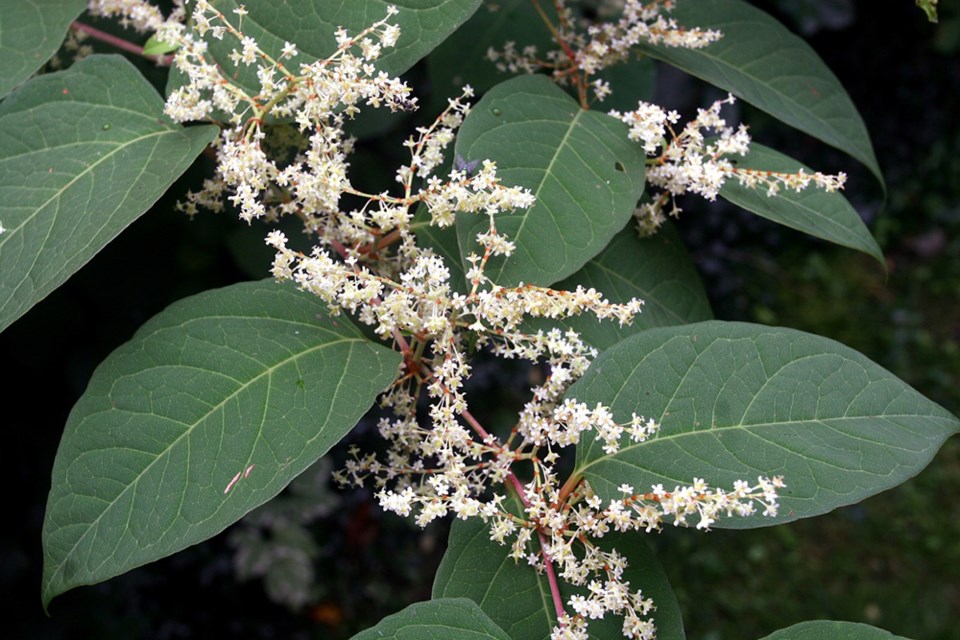It’s been called “the terrorist of the weed world.”
Welcome to yet another invasive species that has enthusiastically embraced the new world, and it is creating headaches for environmentalists and homeowners alike.
Japanese knotweed, known variously as Fallopia japonica or Polygonum cuspidatum, is another invader believed to have been introduced as an ornamental by landscapers and gardeners, attracted by its bamboo-like stands, with stems that can reach a height of two metres to three metres. It has escaped to spread in the U.S., and in Canada from Ontario to the East Coast. It is also found in British Columbia.
Japanese knotweed is a perennial, able to survive harsh Canadian winters – its deep-rooted rhizome system safely surviving to send up new shoots every year. Unfortunately, it can also spread up to 10 metres from the original plant, and its growth is powerful enough to break through asphalt, bricks and mortar, even concrete.
Once established, it’s tough to control. It can create dense stands that destroy biodiversity and wildlife habitat. A Cornell University study found that it reduces the native ground cover species to zero per cent in a dense stand.
And it’s a special problem along streambanks, where pieces of the roots can break off and float downstream to create new colonies – but the rooting structure isn’t dense enough to prevent erosion. It can also spread by seed, its small winged fruits carried on the wind.
That said, Japanese knotweed in Canada is still nowhere near the problem it is in the U.K., where legislation has been passed in an effort to curb the invader.
Since 2013, homesellers must check their yards for the plant – and if it is present, they must provide a management plan for its eradication by a professional. Most mortgagors require a guarantee that knotweed, if present, is being controlled, and there are both legal liability and the possibility of litigation for those who fail to disclose its presence.
In Canada, it’s a restricted species – which means it's illegal to sell, purchase or transport Japanese knotweed. There are also warnings against trying to compost the incredibly tough rhizomes.
Again in the U.K., it’s considered “controlled waste,” and must be disposed of professionally – or dried and burned, on site.
A source at the Lake Simcoe Region Conservation Authority suggested that while Japanese knotweed may not be that visible in the Lake Simcoe watershed, it “is an issue at Sheppard’s Bush,” a conservation area in Aurora.
Invaders like dog-strangling vine and garlic mustard are posing more of a challenge at the moment, although the World Conservation Union has called Japanese knotweed one of the “100 worst invasive species.”
Clumps of cane-like shoots can grow up to eight centimetres per day. The canes are purple-flecked and branch at the nodes. Leaves are heart- or spade-shaped, and alternate on the stems. The flowering clumps are a greenish-white. The clumps can be dense enough to crowd out all other plants – but 2/3 of the plant’s mass is underground in its rhizome system.
The rhizomes can be as much as two metres below the surface, and pieces as small as one centimetre can regenerate within a week.
Don’t buy it, don’t plant it – and if you spot it in the wild, report it at invadingspecies.com, ontarioinvasiveplants.ca, or to the Early Detection & Distribution Mapping System at eddmaps.org/ontario.
